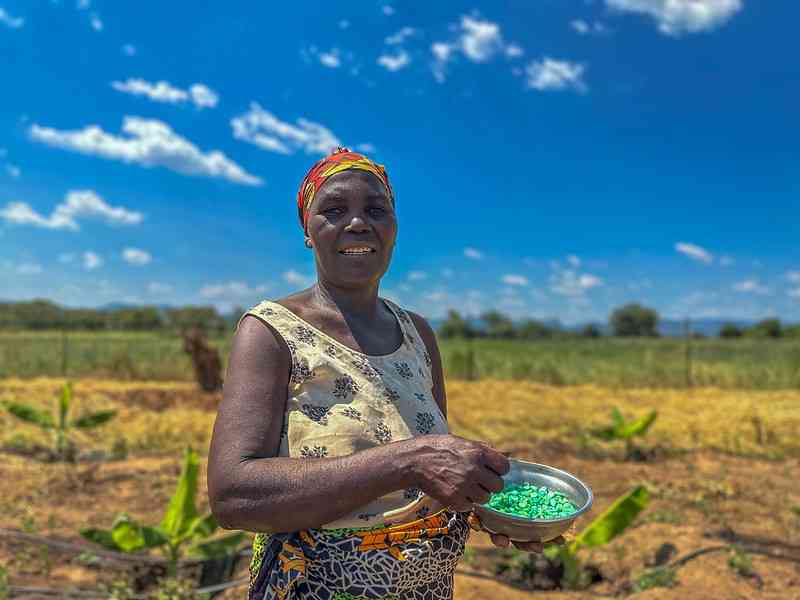
The escalating global climate crisis is not merely an environmental concern; it is a profound public health threat, actively creating "new vulnerabilities" for disease pandemics.
Zimbabwe, a country already grappling with socio-economic challenges, stands at the forefront of this precarious intersection.
From shifting vector-borne disease patterns to compromised water and food security, the impacts of climate change are already being felt, amplifying the risk of outbreaks.
Curbing this looming threat requires a multi-faceted and proactive approach, integrating climate action with robust public health strategies.
Climate change acts as a potent accelerant for disease transmission through various mechanisms.
Rising temperatures and altered rainfall patterns expand the geographical range of vectors like mosquitoes, leading to the resurgence of malaria in previously unaffected areas and the emergence of new threats like dengue, chikungunya, and Zika.
Erratic weather, including prolonged droughts and intense floods, compromises water and sanitation infrastructure, increasing the incidence of waterborne diseases such as cholera and typhoid.
Furthermore, climate-induced displacement and food insecurity can weaken immune systems and foster conditions ripe for the spread of infectious agents.
- Mavhunga puts DeMbare into Chibuku quarterfinals
- Bulls to charge into Zimbabwe gold stocks
- Ndiraya concerned as goals dry up
- Letters: How solar power is transforming African farms
Keep Reading
Zimbabwe has already experienced increased cases of cholera, malaria, and typhoid, directly linked to these climate-related disruptions.
For Zimbabwe, a country heavily reliant on rain-fed agriculture and vulnerable to extreme weather events, the stakes are particularly high.
The recurrent droughts, intensified by climate change, directly threaten food security, leading to malnutrition, which in turn weakens the population's resistance to disease.
Flooding, on the other hand, overwhelms sanitation systems, contaminates water sources, and creates breeding grounds for disease vectors.
The existing challenges of limited resources, infrastructure deficits, and a burdened healthcare system further exacerbate Zimbabwe's vulnerability to these climate-driven health crises.
To effectively curb these new vulnerabilities, Zimbabwe must embark on a comprehensive and integrated strategy with urgency.
Firstly, strengthening the public health surveillance and response system is paramount.
This involves enhancing early warning systems for climate-sensitive diseases, improving laboratory diagnostic capacities, and bolstering the rapid response teams.
Investing in climate-health observatories that monitor environmental changes and their correlation with disease patterns will enable predictive modelling and targeted interventions.
Community health workers, who are often the first point of contact in remote areas, need to be adequately trained and equipped to identify and report unusual disease clusters, bridging the gap between communities and formal health systems.
Secondly, investing in climate-resilient water and sanitation infrastructure is crucial.
This includes developing and rehabilitating irrigation schemes, constructing and restoring water harvesting infrastructure, and promoting climate-smart water management practices to ensure access to clean and safe water, even during periods of drought or flood.
Decentralised water purification systems, boreholes, and improved sanitation facilities in rural and urban areas will significantly reduce the burden of waterborne diseases.
Furthermore, promoting hygiene education campaigns will reinforce safe practices at the household level.
Thirdly, integrating climate change adaptation into agricultural practices and food security initiatives is vital.
Promoting drought-resistant crops, diversifying agricultural production, and encouraging conservation agriculture techniques can enhance food security and reduce malnutrition, thereby strengthening community resilience against disease.
Livelihood diversification programmes can also offer alternative income streams, reducing dependence on climate-vulnerable sectors and enabling households to better cope with climate shocks.
Fourthly, enhancing environmental management and vector control programs is essential.
This includes sustainable land-use planning that minimizes deforestation and promotes reforestation, as intact ecosystems can act as natural buffers against disease spillover.
Targeted vector control measures, such as integrated mosquito management programs that combine biological, environmental, and chemical interventions, should be scaled up, with a focus on community participation and environmentally friendly approaches.
Fifthly, fostering inter-sectoral collaboration and policy coherence is key. Climate change and health are not isolated issues; their solutions lie in coordinated efforts across ministries of health, environment, agriculture, water, and finance.
Zimbabwe's National Climate Change Response Strategy already emphasizes mainstreaming climate change into all key sectors.
This needs to translate into actionable, funded programs that prioritise public health within climate adaptation and mitigation efforts. Robust policy frameworks that incentivize sustainable practices and discourage environmentally damaging activities are also crucial.
Finally, international cooperation and financial support remain indispensable.
While Zimbabwe is committed to addressing climate change, the scale of the challenge often outstrips national resources.
International aid, technical assistance, and capacity building initiatives can significantly bolster Zimbabwe's efforts in areas such as climate modeling, disease surveillance technologies, and climate-resilient infrastructure development.
This support should be aligned with national priorities and foster local ownership and sustainability.
Climate change is undeniably reshaping the global landscape of disease, creating complex and interconnected vulnerabilities. For Zimbabwe, this reality presents an urgent call to action.
By proactively strengthening its public health systems, investing in climate-resilient infrastructure, adapting agricultural practices, enhancing environmental management, fostering inter-sectoral collaboration, and leveraging international partnerships, Zimbabwe can build a more resilient nation capable of curbing the emerging threats of climate-driven disease pandemics.
* Gary Gerald Mtombeni is a journalist based in Harare. He writes here in his personal capacity. For feedback Email [email protected]/ call — +263778861608











